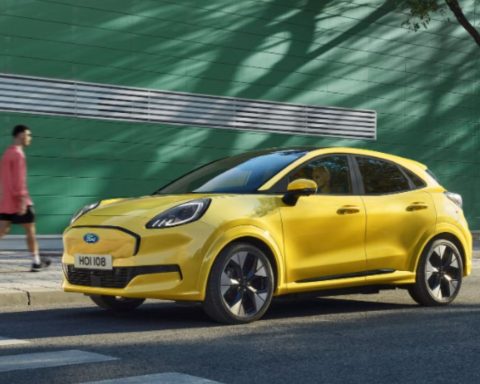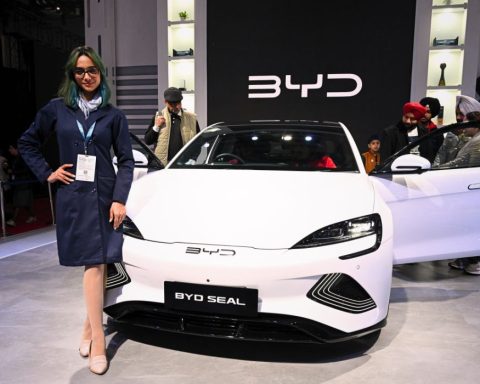Removing emissions from public transit in Canada is far more complicated than swapping a diesel-powered bus for a battery-powered one.
There are the obvious challenges, like securing funding for buses and installing high-voltage chargers. But the greater challenges are far more nuanced, ranging from finding real estate and skilled labour to developing software from the ground up.
And a lot is at stake. There are 15,000 buses on the road in Canada, according to Josipa Petrunic, CEO of the Canadian Urban Transit Research & Innovation Consortium (CUTRIC), and the federal government wants a third of those to be fully electric by 2025. Presently, just 160 electric buses are in operation, and only 621 more are on order.
“On this trajectory, clearly that’s not going to happen,” Petrunic says.
In Quebec, the provincial government has stated that it wants 55% of the bus fleets within its borders to be fully electric by 2030, and beginning in 2025 it will only subsidize purchases of buses that are 100% electric. Of the 4,000 urban buses currently operating in Quebec, just 50 to 60 are battery electric, making it a “major challenge” to meet these objectives, according to Marc-André Varin, general manager of the Association du transport urbain du Québec. Varin spoke at a virtual event on electrification of transport co-organized by the Canadian German Chamber of Industry last month as part of Germany’s climate bridge program, facilitating cooperation on climate action between the countries.
Looking across the Atlantic, other jurisdictions have made more progress. Berlin’s public transit agency, Berliner Verkehrsbetriebe (BVG), operates the largest bus fleet in Germany. Of its 1,400 operating buses, 138 are fully electric, and 90 more are arriving next year. The agency aims to be 100% electric by 2030 through a combination of short-range electric buses charged through city infrastructure and long-range buses that use overnight depot charging.
“We’re testing both systems,” says Daniel Hesse, head of new mobility at BVG. “One way you have a large battery and charge at the depot, having issues potentially with the range that you can do with the bus in the daytime. And at the same time, we’re testing charging opportunities in the city, which allows us to use larger buses with smaller batteries without having range issues, but then having to rely on public infrastructure.”
There are some challenges and opportunities in converting public transit to electricity that will be universal, and others will be unique to Canada.
Hurdles
One of the most significant obstacles being encountered by cities around the world is that electric buses require more real estate in numerous ways. For example, an electric fleet requires more buses to run at the same level of service – roughly 1.2 electric buses to replace 1 diesel to compensate for their lower range, Varin says – plus charging infrastructure is required. Depots must be indoors for proper battery conditioning, especially in the typical Canadian climate. Municipalities are already dealing with outright shortages of space, especially in denser urban areas where demand for electric mobility is highest and transit needs compete with other issues such as affordable housing concerns.
BVG is addressing this with its mixed charging strategy Hesse described. Montreal is looking at an alternate solution: since electric buses eliminate the public health concern of emissions, Varin says, the city is in the process of building a new underground transit garage.
“It exists in Europe, and I believe in Asia, where you could actually have buses run into a commercial complex,” he says. “You could look at those buildings and complexes very differently because of the absence of any exhaust.”
On top of this, transit authorities are quickly learning that electric buses cannot be managed in established ways. Entirely new digital systems will be required to monitor and manage charging status versus route demands of timing and distance, and to centralize the reporting of issues so they can be addressed quickly. “There has to be communication between the vehicles, infrastructure, software back ends and, of course, human beings,” Hesse says.
“That’s a huge transformation for us. Even though nine years to 2030 seems like a long time, it’s a marathon at a sprint pace.”
–Daniel Hesse, head of new mobility, BVG
Petrunic says Canadian transit agencies will quickly need to address a lack of expertise in electrical transit systems within their ranks.
“If you don’t have subways or light rail or streetcars, you don’t have a standing army of electricians and high-voltage technicians,” she says. “You don’t have that knowledge in house, so you’re starting to build it all out and essentially outsourcing.”
Add these challenges on top of purchasing buses and installing infrastructure and it becomes clear that the move to electrification in Canada is currently underfunded, Petrunic says.
“The government federally has pumped $2.75 billion into it,” she says. “We’ve articulated it’s more like $4 billion that needs to go into the industry. But nonetheless, nobody’s going to throw out $2.75 billion. That is changing the industry.”
Opportunities
In the face of these obstacles, it’s important not to lose sight of the opportunities that come with this shift. As well as the clear benefits of working toward emissions targets, Petrunic says that electrifying transit addresses some of the current inequities in quality of life for both users and their surrounding communities.
“Car electrification is for the rich right now,” she says. “Bus electrification is not. It’s for the middle-class and the poor. And that means the social equity benefits are astronomical.”
She points out that at least 60% of the people who take transit in Canada are women, A heavy proportion of which are racialized and single moms. “This is serving those individuals better in terms of quality-of-life improvement. We’ve started to look at deployment of these electric buses, the first round, in sensitive communities with schools, senior homes, hospitals, where you should be deploying the quietest, cleanest, nicest-ride buses first.”
“Bus electrification is for the middle-class and the poor. And that means the social equity benefits are astronomical.”
–Josipa Petrunic, CEO of the Canadian Urban Transit Research & Innovation Consortium
The switch to electric will also come with lower overall operating costs because of savings on maintenance and using electricity instead of diesel fuel, though the amount that will be saved is still to be determined. Varin says that while some estimates show the reduction to be as much as 25%, ATUQ’s estimates fall closer to what Europe is seeing, which, even after factoring in Quebec’s lower cost of electricity, sits closer to 10 to 15%.
Job creation within the electric transit manufacturing industry also presents a strong opportunity for Canada, Petrunic says, one that she is especially bullish on. By CUTRIC’s calculations, between the bus manufacturing already being done by companies such as New Flyer, Nova Bus, Lion and others, plus their suppliers and electrical utility job growth, the industry accounted for nearly half a million jobs in Canada in 2020.
“That is a huge win for Canadians, that we can actually get great-paying jobs in the electric and hydrogen-fuel-cell bus industries or heavy-duty vehicle industries here in a way that I believe will outshine the auto sector in the next decade,” she says.
Petrunic notes that growth in electrified transit means increased potential for collaboration with the large- and small-scale trucking and delivery sectors, which could allow for another segment of the transportation industry to shift toward zero emissions in lockstep.
“We start to create the mechanisms for trucking delivery vehicles and 18-wheelers to decarbonize as well, and that’s the big piece of the transportation pie,” she says. “[Bus] chargers are not used 24 hours a day, so some of that time can be rented out to Canada Post delivery vehicles and delivery trucks. Therefore, it’s not just the emissions savings from buses but the knock-on effect in emission savings from any other heavy-duty vehicle that will use those high-power charging systems.”
Collaboration is key
Addressing the need for change at a federal level has brought awareness of public transit electrification to all corners of the country, Petrunic says.
“All those transit agencies that weren’t even thinking about doing electric bus planning – they didn’t even have the pen and the paper together to start thinking about the mathematics and the physics and the economics of it – they are all now lining up to do feasibility studies,” she says. “By the end of next year, all of them will have some plan in mind of how they’re going to get to zero-emission fleets.”
As Canada embarks on this journey, Hesse says that collaboration between agencies and organizations around the world is key to moving efficiently toward this united goal and tailoring it to the unique needs of each transit system.
“We are all on the same paths worldwide,” he says. “I highly encourage our Canadian colleagues to reach out to other cities in the rest of the world, to the people in Europe and also in China and elsewhere, where this process is heavily used already.”
“It’s important to find experience and then to learn from it,” he says. “But it’s probably not working to just copy and paste because there are always local conditions that are different. I think that’s something that is really important to keep in mind.”
Stephanie Wallcraft is a multiple-award-winning automotive journalist based in Toronto and is the president of the Automobile Journalists Association of Canada.
With the support of the Embassy of the Federal Republic of Germany in Canada.







